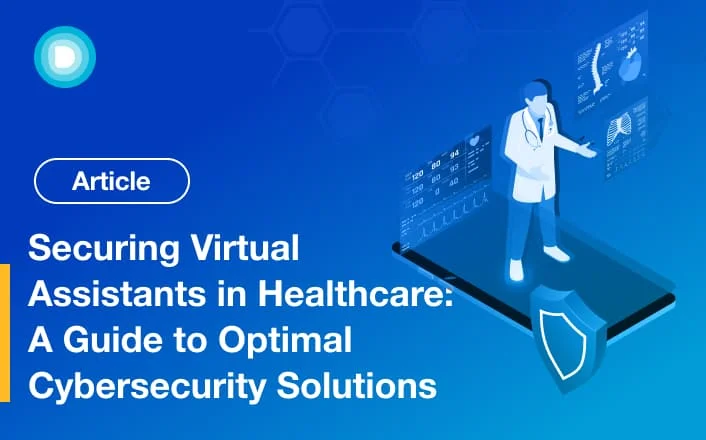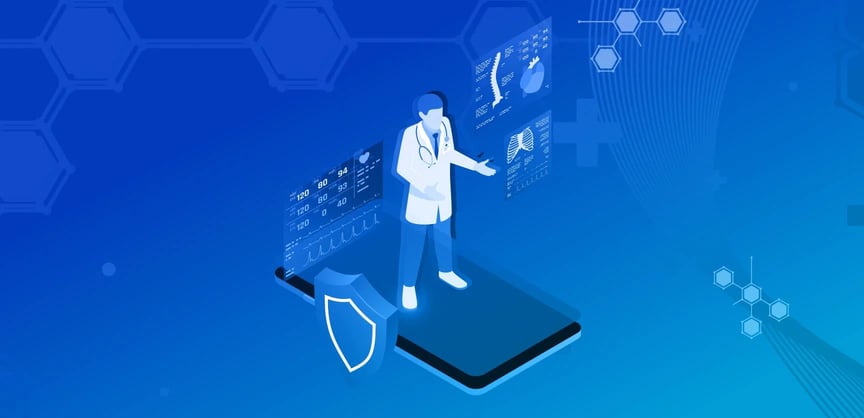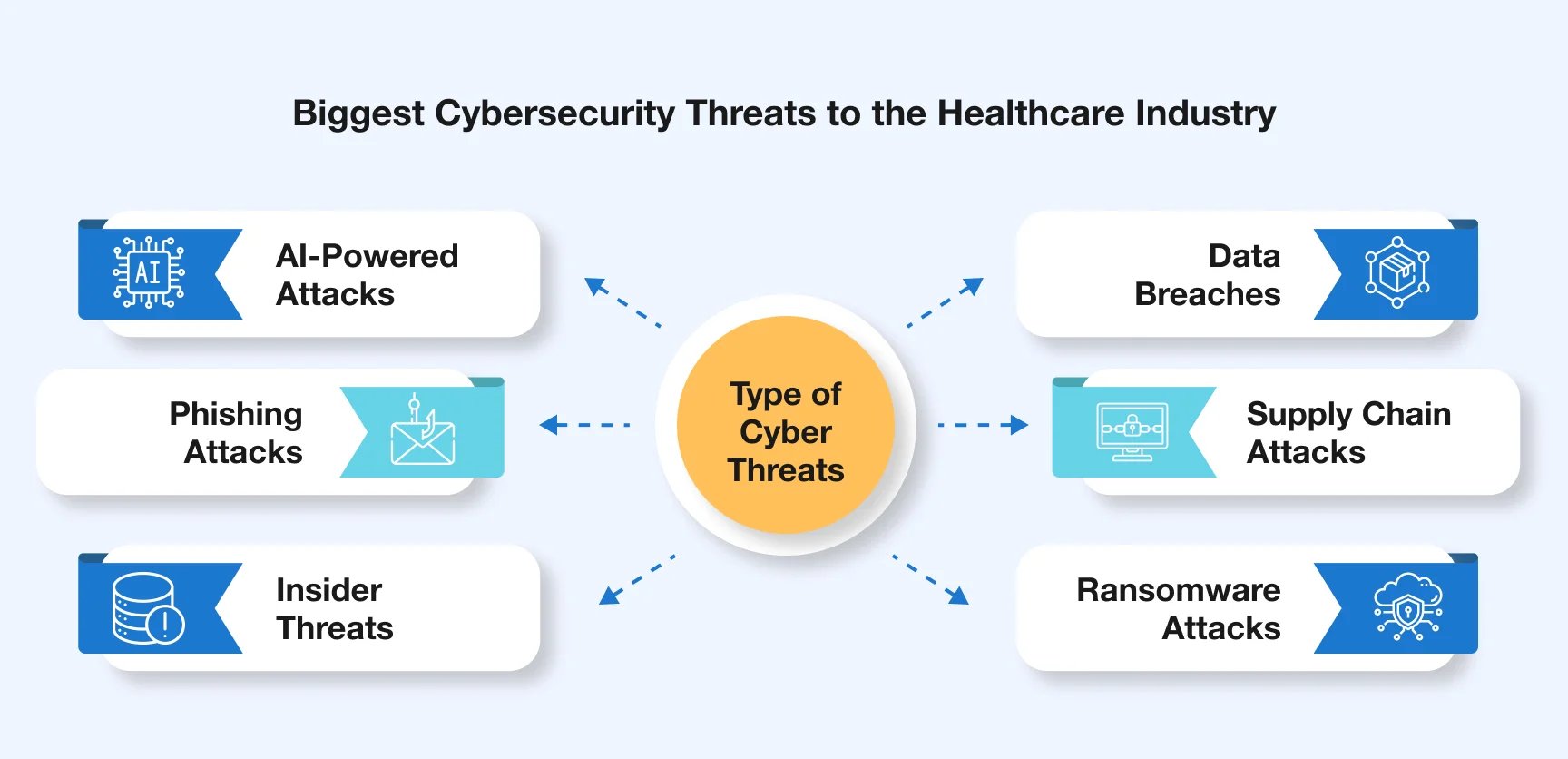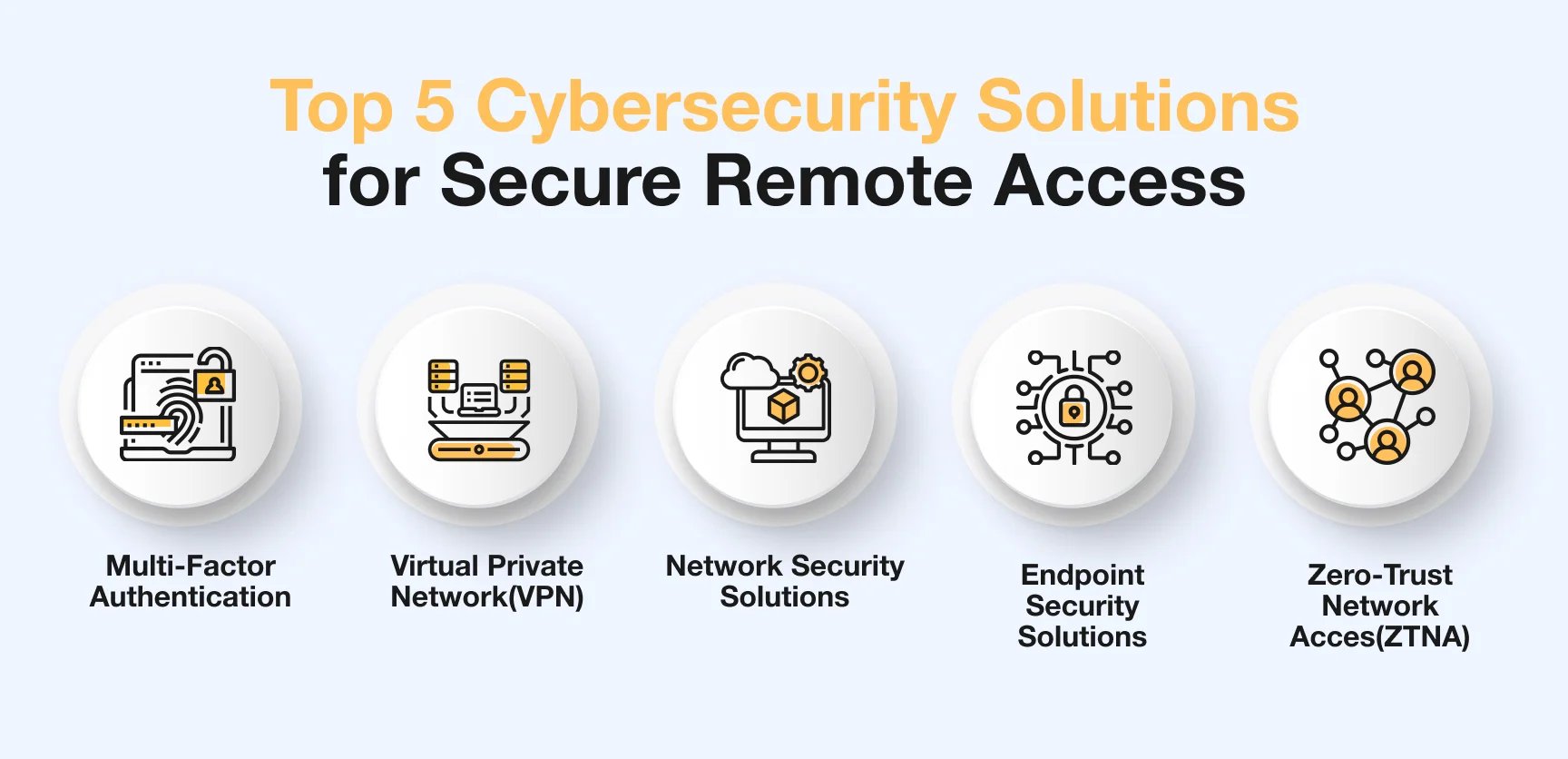- Product
-
Solution
-
By Industry
Cybersecurity solutions tailored to your industry’s needs.
-
- Resources
-
Books
Our ultimate guides and playbooks
Solution Briefs
Overview of PureDome’s functionality
-
Quizzes
Assess your cybersecurity readiness
Case Studies
PureDome customer success stories
Newsletter
Subscribe to the PureDome newsletter
-
- About Us
- Partner
- Pricing
- Download
Securing Virtual Assistants in Healthcare: A Guide to Optimal Cybersecurity Solutions
-
Sharmeen Saleem
-
30 Jan 2024
- 7 min read


In today's tech-driven healthcare landscape, remote virtual assistants are pivotal. While advancing patient care and streamlining processes with the times, ensuring secure remote access remains challenging. With employees accessing networks from diverse locations and devices, it widens the attack surface, raises compliance concerns, and complicates access control.
However, the integration of these VMAs into the market is directly related to the increasing vulnerability of the healthcare industry toward cybersecurity concerns and threats. In this blog, we delve into the key cybersecurity threats facing VMAs and explore how implementing secure remote access can serve as a robust defense.
Biggest Cybersecurity Threats to the Healthcare Industry

A report by Check Point reveals that healthcare is among the top three industries targeted by threat actors, with some of the most common ones being:
Phishing Attacks
Phishing threats pose a significant risk to the healthcare sector, with attackers using deceptive email campaigns and fake websites to compromise virtual assistants and patients. These attacks result in unauthorized access, data exposure, and potential PHI theft. As of 2022, 81% of healthcare organizations experienced phishing incidents, a number expected to grow. The aftermath includes regulatory fines, legal actions, and a loss of patient trust, while individuals become vulnerable to identity theft through tactics like smishing and vishing.
Insider Threats
Insider threats present a significant risk to healthcare organizations, encompassing disgruntled employees, negligent workers, malicious agents, and third parties. Regardless of their identity, all insiders have access to the company's system and data, posing a potential threat. These threats manifest in various ways, from data breaches incurring regulatory fines to malicious agents tampering with patient data, impacting diagnoses and treatment. The consequences extend to the erosion of customer trust, hindering research collaborations, and disrupting effective team communication within the healthcare industry.
Ransomware Attacks
Ransomware attacks are among the biggest threats to the healthcare industry. According to a survey by SOPHOS, researchers found a 94% increase in ransomware attacks within the healthcare sector. The prevalence of ransomware attacks in the healthcare sector is because they hold a massive volume of sensitive patient information, including social security numbers and personally identifiable information (PII), which can be of significant value to cybercriminals. The attackers use various tactics such as the RaaS model, intermittent encryption, or double extortion to compromise data and, in exchange, demand hefty ransom, resulting in substantial financial loss. In addition, they present a range of other dangers like penalties and lawsuits, inability to recover data, and disruption of business operations.
Data Breaches
As a prime target for cybercriminals, the healthcare sector experiences a disproportionate number of data breaches compared to other industries. Outdated software and systems create cybersecurity vulnerabilities, exploited by attackers to compromise patient data, leading to identity theft and medical fraud. The financial and reputational consequences for healthcare organizations are substantial, with the IBM Cost of Data Breach Report 2023 indicating that healthcare data breach costs average $10.93 million, significantly higher than the $4.45 million average for other sectors.
AI-Powered Attacks
The rapid integration of AI in healthcare presents both opportunities and challenges. While AI enhances medical processes and patient care, it also introduces new cybersecurity risks. Cybercriminals exploit AI capabilities to launch sophisticated attacks, utilizing generative AI tools for convincing phishing and malware. These tools detect vulnerabilities, bypass traditional security, and extract valuable data, posing a serious threat to patient privacy and data security in the healthcare sector.
Supply Chain Attacks
Cybercriminals are strategically targeting healthcare supply chains, aiming to compromise organizations through suppliers' vulnerabilities indirectly. Virtual assistants in healthcare, relying on diverse vendors, become susceptible to attacks. Malicious actors exploit weaknesses, compromising the entire virtual assistant system. A survey reports a significant rise in supply chain attacks, disrupting patient care for 77% of respondents. These attacks emphasize the need for robust cybersecurity measures to safeguard healthcare data and ensure uninterrupted services.
Why Does Remote Access Pose a Risk to Virtual Medical Assistants' Security?
Like any other industry, healthcare organizations hire remote virtual assistants for a variety of reasons, with the major ones being their 24/7 availability, cost-effectiveness, and reduced administrative burden that they provide.
However, as remote work culture increases, so do the security risks, and 91% of cybersecurity professionals even saw an increase in cyber-attacks while working remotely. Remote healthcare VA requires access to patients' data to perform their tasks. The constant interaction of VA and data raises significant security concerns, and below is a detailed insight into them:
Increased Attack Surface
Integrating Virtual Assistants (VAs) with the Internet of Medical Things (IoMT) devices enhances healthcare and widens the attack surface. Third-party vulnerabilities, misconfigurations, and outdated software in these devices create opportunities for cybercriminals. Remote VAs using personal, potentially insecure devices become entry points for hackers, exploiting weak passwords and encryption gaps. In a remote workforce, managing device security becomes intricate, with an increasing number of devices introducing challenges in tracking shadow devices and monitoring activities.
Compliance Risks
Remote virtual medical assistants encounter significant cybersecurity threats, notably compliance violations. As these assistants access and store sensitive patient data beyond traditional healthcare settings, ensuring compliance with data protection laws like HIPAA becomes complex. Violations expose healthcare organizations to lawsuits, hefty fines, and reputational damage. HIPAA fines range from $1,000 to $50,000, with severe cases leading to imprisonment. Compliance challenges arise due to inadequately protected devices, global operations subject to diverse regulations, and potential breaches of stringent compliance requirements, posing risks of unauthorized access and compromised healthcare information.
Difficult to Control Access
Virtual medical assistants access data from different devices and systems to facilitate the patients. However, remote access makes it challenging for the security teams to manage control over the healthcare systems. Remote users access virtual assistants through various networks and locations, making monitoring and tracking their access patterns difficult. Similarly, personal devices like laptops, smartphones, and shadow IoT devices further complicate regulating access. The increased number of endpoints virtual assistants use to access healthcare data raises the risk of unauthorized access. The attackers can exploit the endpoints to enter the healthcare network, where they can temper or steal data, leading to potential data breaches.
Top 5 Cybersecurity Solutions for Secure Remote Access

Cybersecurity solutions have become crucial for healthcare organizations in light of remote virtual assistants' security issues. The following solutions described below help virtual assistants access healthcare data securely from any location:
Multi-Factor Authentication
Multi-factor authentication (MFA) plays a critical role in securing remote access to virtual assistants and fortifying the overall security of healthcare organizations. Positioned as one of the most prevalent endpoint security solutions, MFA goes beyond traditional usernames and passwords. Recognizing that usernames and passwords represent vulnerable points in the security chain, MFA introduces additional verification layers. By requiring extra steps for authentication, MFA significantly raises the bar for attackers, making it challenging to steal credentials or access sensitive information. This robust security measure mitigates the risk of credential theft and serves as a deterrent against insider threats and phishing attacks, contributing to a more resilient healthcare security framework.
MFA requires virtual medical assistants to verify their identity via multiple authentication methods, such as:
- Software-based tokens
- One-Time Password (OTP)
- Push notifications
- Email and SMS alerts.
- Biometrics - Fingerprinting, face, voice patterns, or retinal scanning.
In the healthcare sector, implementing MFA is crucial to ensure secure remote access to virtual assistants. As these assistants handle a bulk volume of sensitive data, MFA acts as a barrier and safeguards patients' information no matter where it is accessed. MFA also ensures that only authorized virtual assistants access the database, preventing potential data breaches and staying in compliance with HIPAA regulations.
Virtual Private Network (VPN)
As healthcare organizations increasingly rely on remote virtual assistants for secure access and cyber threat protection, adopting a business VPN becomes imperative. A Virtual Private Network (VPN), particularly a remote access VPN, enhances online security, allowing virtual healthcare assistants secure access to the internal network. It establishes an encrypted tunnel between VA devices and the company's network, ensuring secure access without monitoring their traffic. This reduces the attack surface, preventing third-party eavesdropping or interception of activities and data transmission. With a VPN, virtual assistants can confidently focus on their work, ensuring the confidentiality of medical records and patient data.
An added benefit of VPN usage is its authentication mechanisms, verifying user and server identity to prevent unauthorized access. This ensures only authorized virtual assistants can access healthcare systems, aiding in compliance with regulations. However, selecting a reliable VPN provider is crucial, emphasizing robust encryption protocols, a verified no-log policy, and privacy-focused features. An extensive server network and responsive customer support are essential for effective VPN functioning.
Network Security Solutions
While healthcare networks are inherently vulnerable to cyber threats, endpoint network security solutions play a pivotal role in safeguarding critical patient and employee data, mitigating the risk of data theft and breaches. The susceptibility to endpoint attacks is high in healthcare networks employing remote virtual assistants, which comprise various interconnected devices, such as smartphones, laptops, and tablets. Network security tools, including firewalls, intrusion detection systems (IDS), and intrusion prevention systems (IPSs), actively monitor network traffic, identify suspicious activities, and alert administrators about potential threats, enhancing virtual assistants' security posture. These solutions also respond in real-time to block malicious activities, ensuring data integrity and confidentiality.
Moreover, these tools enforce access control measures, preventing unauthorized access and creating a secure working environment for virtual assistants, irrespective of their location. By ensuring network security, healthcare organizations can meet specific standards, safeguard patients' privacy, and avoid legal consequences associated with non-compliance.
Endpoint Security Solutions
Endpoint security focuses on fortifying all potential entry points that hackers might exploit to breach the corporate network. Various endpoint security solutions like Endpoint Detection and Response (EDR), Extended Detection and Response (XDR), Intrusion Detection and Prevention (IDP), and traditional antivirus/antimalware software serve as the first line of defense by identifying and thwarting suspicious activities and endpoint attacks such as phishing and ransomware attacks.
These solutions often feature encryption capabilities, ensuring secure data transfer between virtual assistants and remote devices during interactions. Moreover, they enable continuous monitoring, reporting, and enforcement of access controls, guaranteeing that only authorized virtual assistant devices can connect to the healthcare network. This prevents unauthorized threat actors from infiltrating healthcare systems and safeguards sensitive data.
Healthcare organizations should implement and enforce policies tailored for virtual assistants to bolster endpoint security. These policies ensure the reliability of virtual assistants and shield them from existing threats. Establishing robust security policies demonstrates a commitment to protecting patients' data and helps virtual assistants and healthcare organizations align with data protection laws, mitigating legal consequences.
Zero Trust Network Access (ZTNA)
Zero Trust Network Access (ZTNA) is one of the most effective cybersecurity solutions healthcare organizations adopt to ensure secure access for virtual assistants. This security approach assumes that users do not inherently trust any other user and mandates identity verification before granting access. ZTNA enforces precise access control policies, consistently authenticating and verifying user identities. This ensures that only authorized remote virtual assistants can access healthcare systems from any remote location, meeting necessary compliance requirements.
What sets ZTNA apart is its focus on securing access to specific applications rather than the entire network, thereby reducing the attack surface and bolstering overall security. Additionally, ZTNA employs micro-segmentation, dividing the network into smaller, isolated segments. This restricts the lateral movement of threat actors and minimizes the risks of potential cyber-attacks. Even if an attacker gains unauthorized access to one system, prompt actions are taken to mitigate the impact.
How to Choose the Best Cybersecurity Solution?
Secure remote access is a critical concern for virtual medical assistants, and various cybersecurity solutions have been adopted to cater to it. However, each solution, except ZTNA, presents security challenges. For instance, MFA can be exploited through phishing, compromising sensitive data. Implementing solutions like firewalls and EDR across diverse remote environments is complex and resource-intensive. VPNs, widely used, pose security risks, with concerns about vulnerability and unauthorized access. In contrast, ZTNA, exemplified by PureDome, offers granular access control, adaptive security, compliance assurance, and continuous verification, emerging as the optimal cybersecurity solution for virtual assistants.
Final Thoughts
Safeguarding virtual medical assistants from cybersecurity threats and ensuring secure remote access are paramount concerns for the healthcare industry. While various solutions exist, ZTNA stands out as the optimal choice, embracing the principle of least privilege, effective access control management, attack surface reduction, and robust compliance with HIPAA regulations. This comprehensive approach ensures enhanced security and aligns with the evolving needs of healthcare organizations relying on virtual assistants for critical operations.
Stay up to date with the latest cybersecurity insights and best practices
Get the latest information, stories, and resources in your inbox. Subscribe for monthly updates.
Securing 1000+ Businesses Across The World